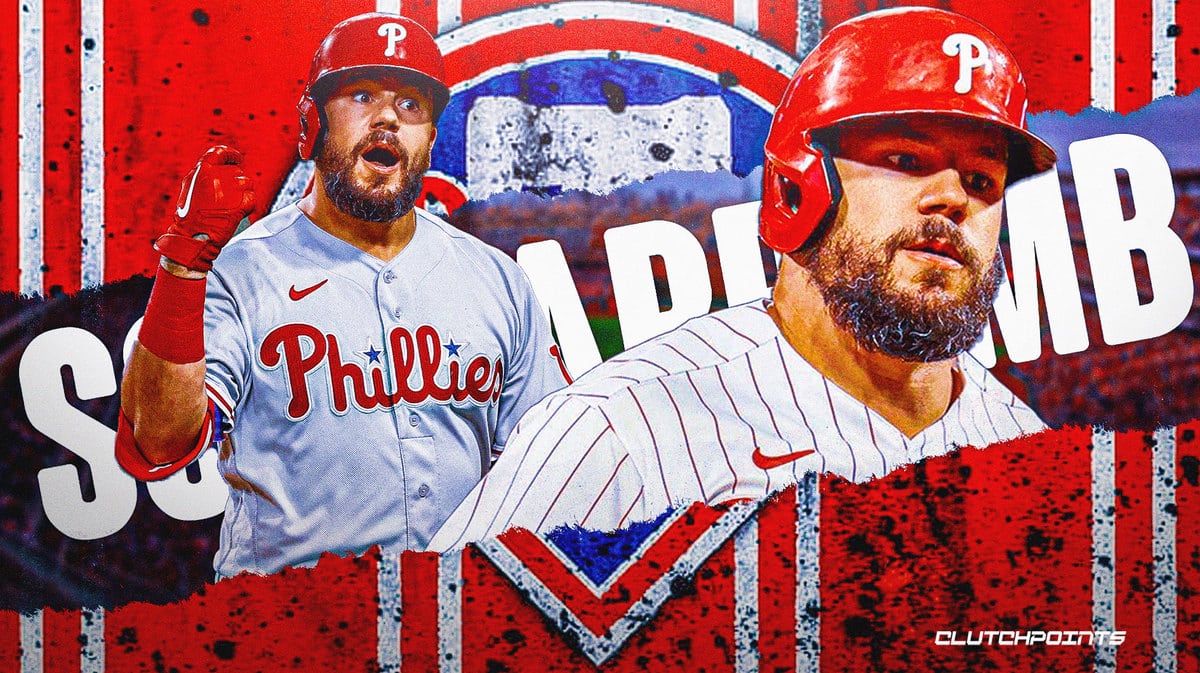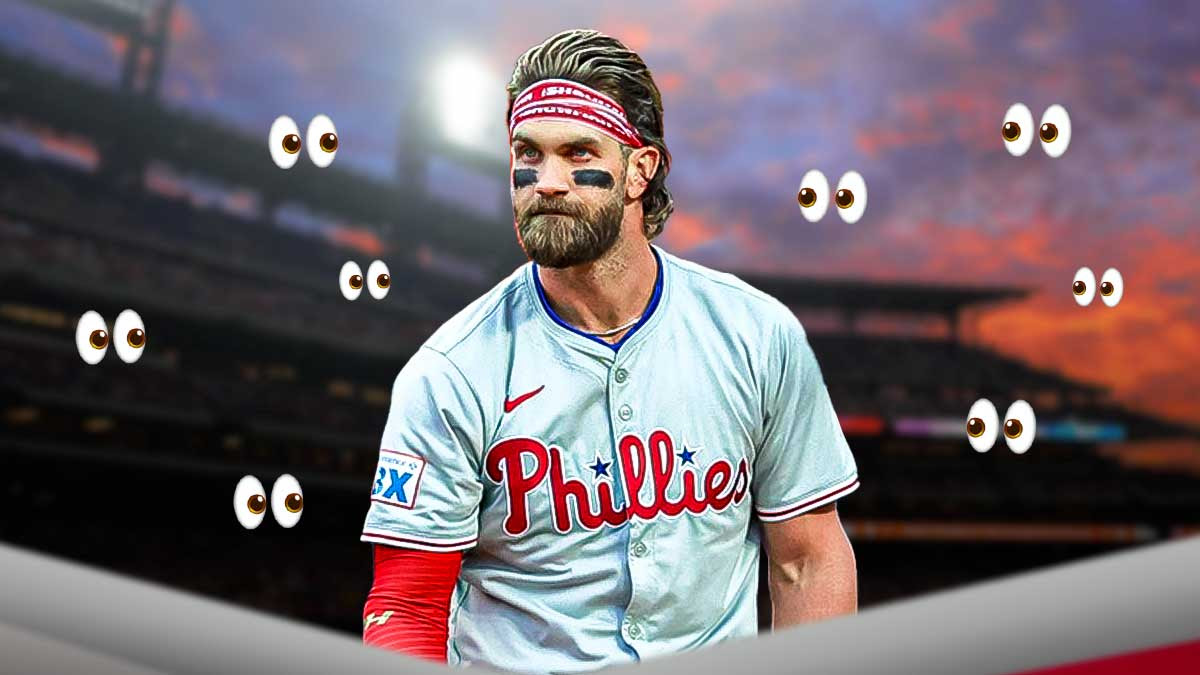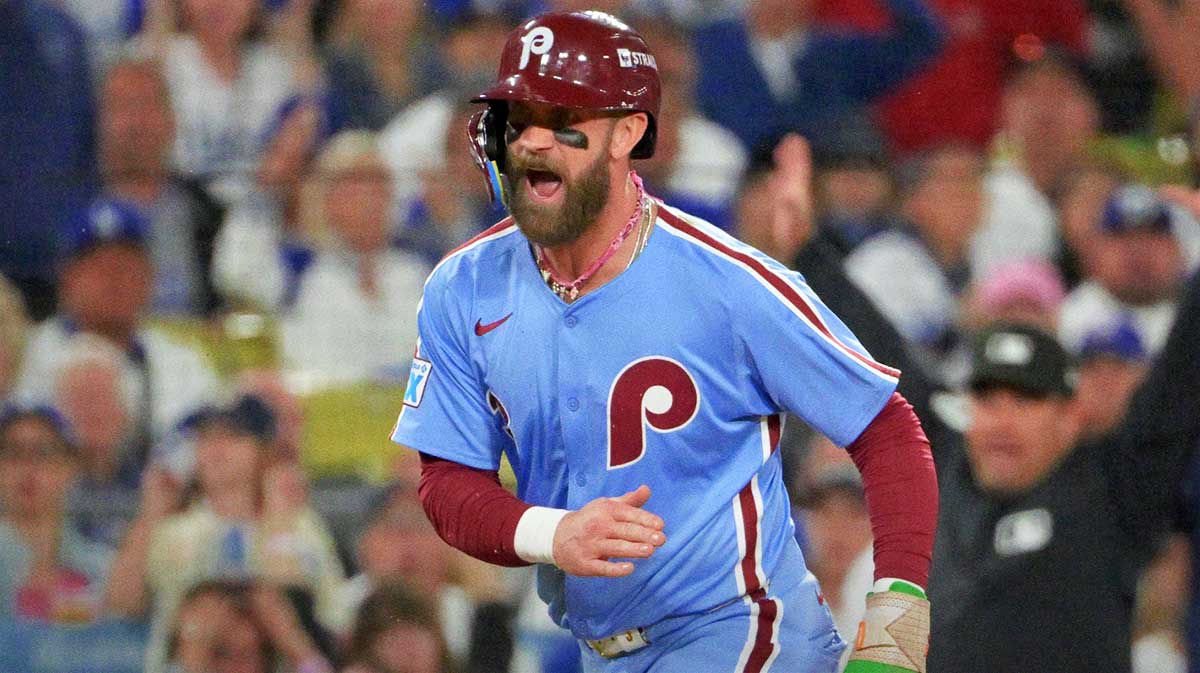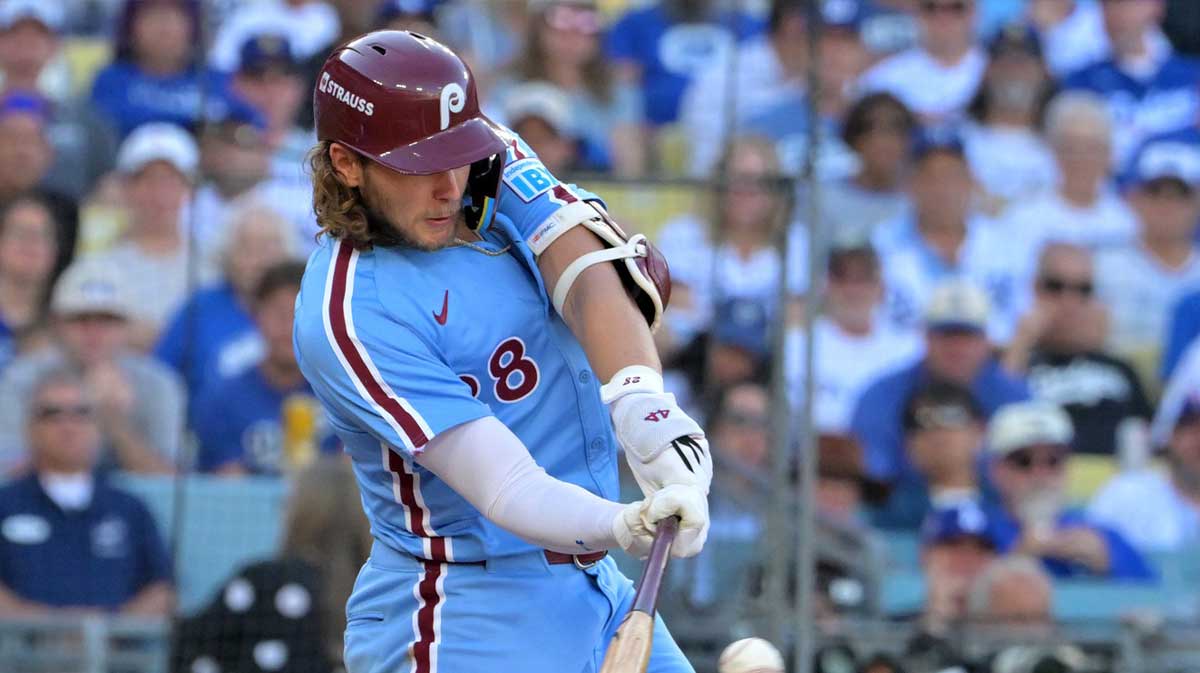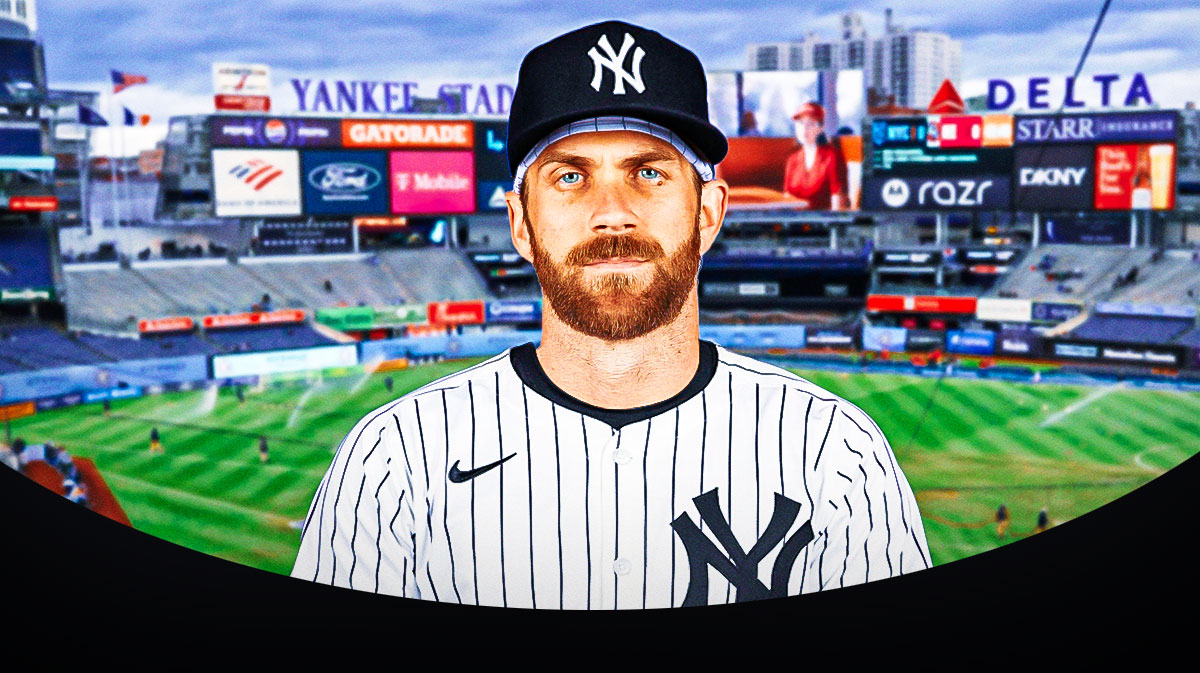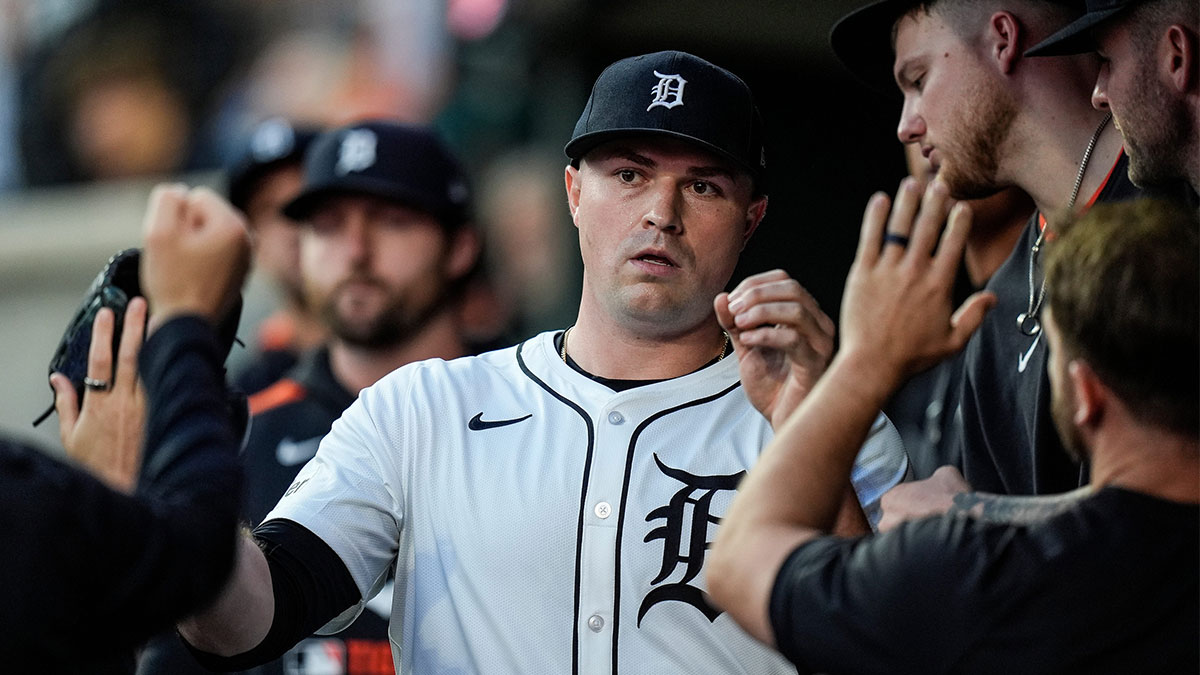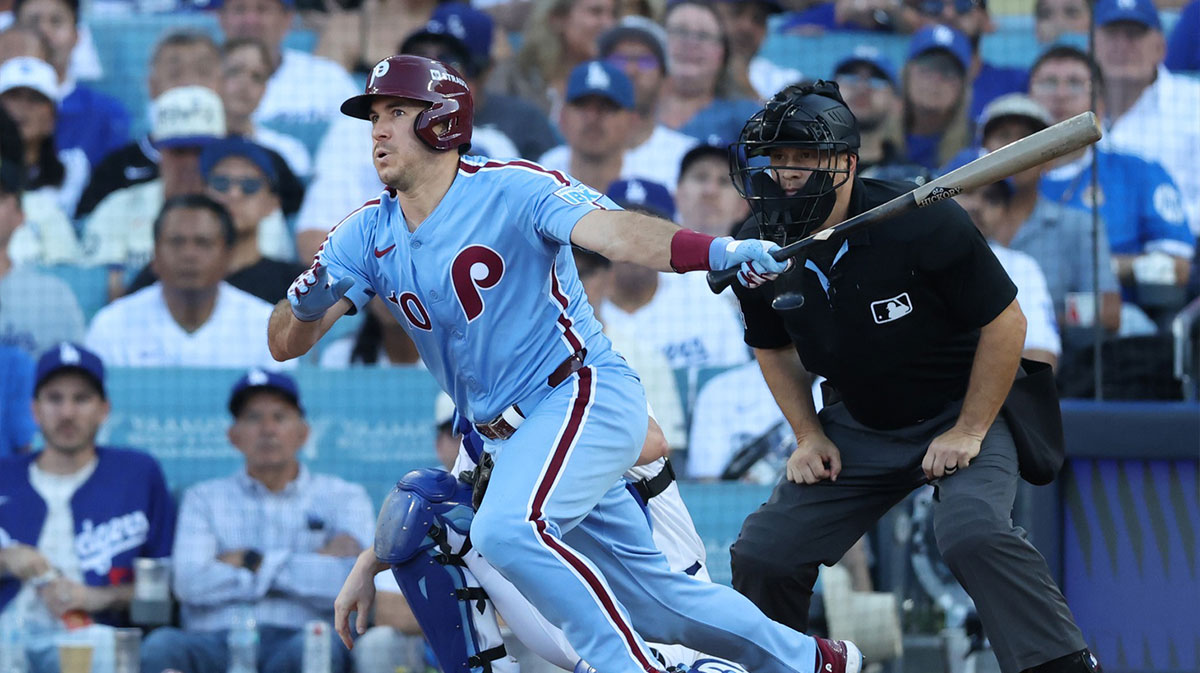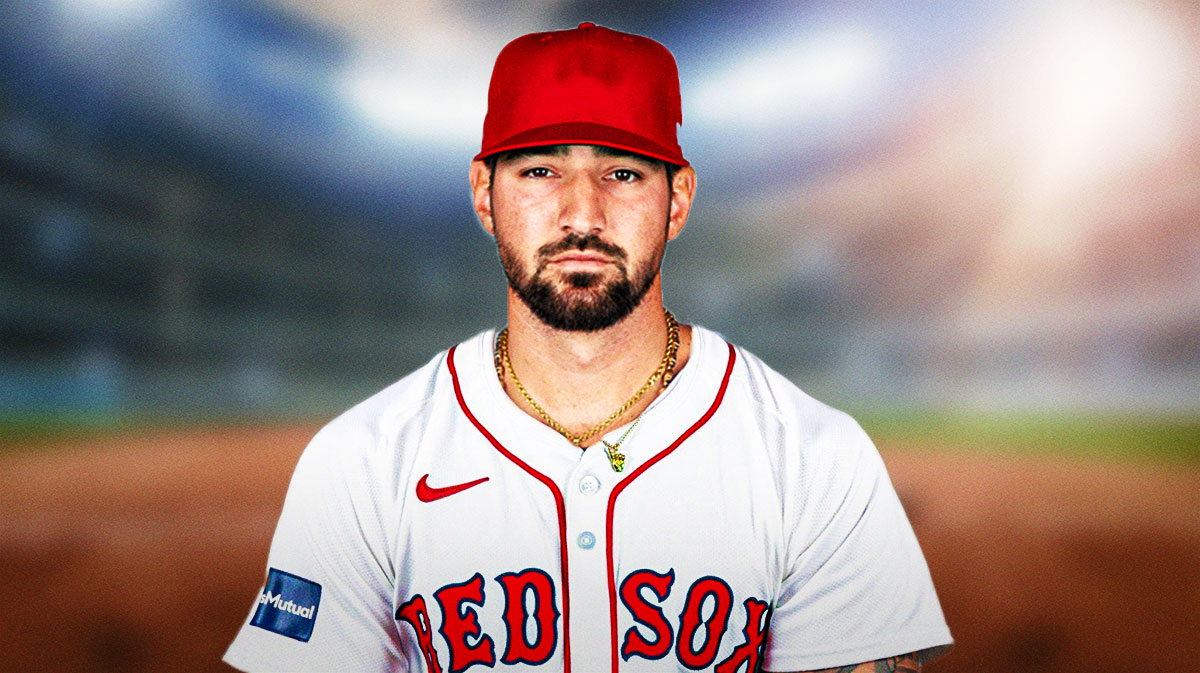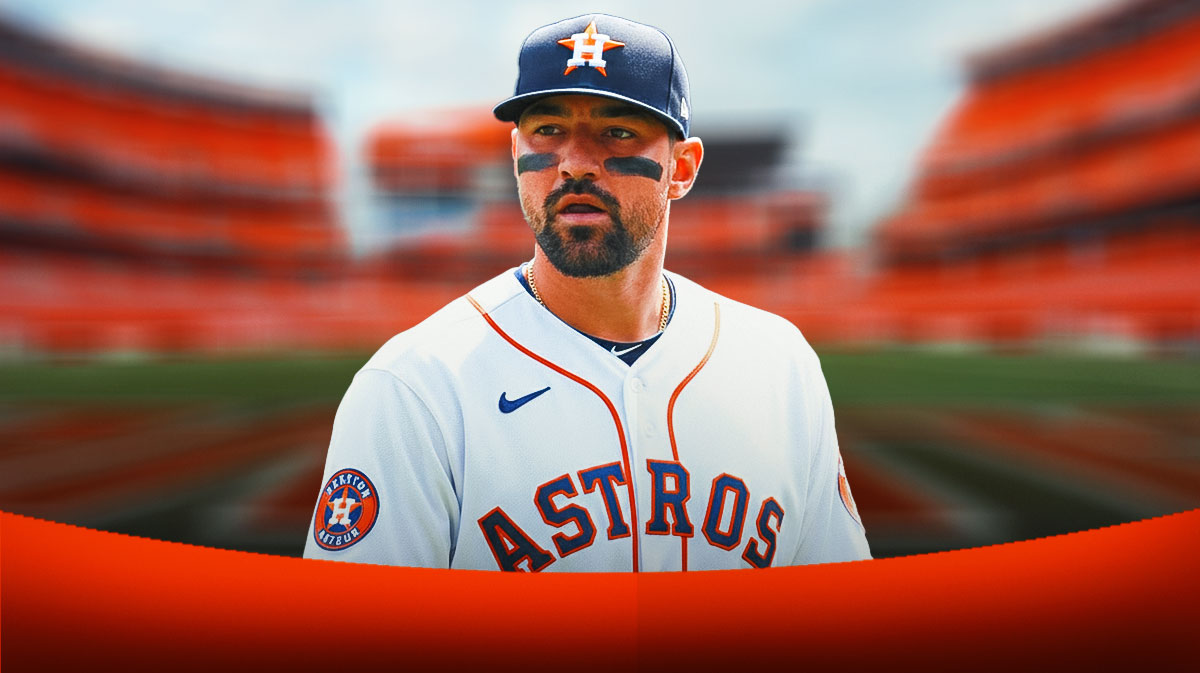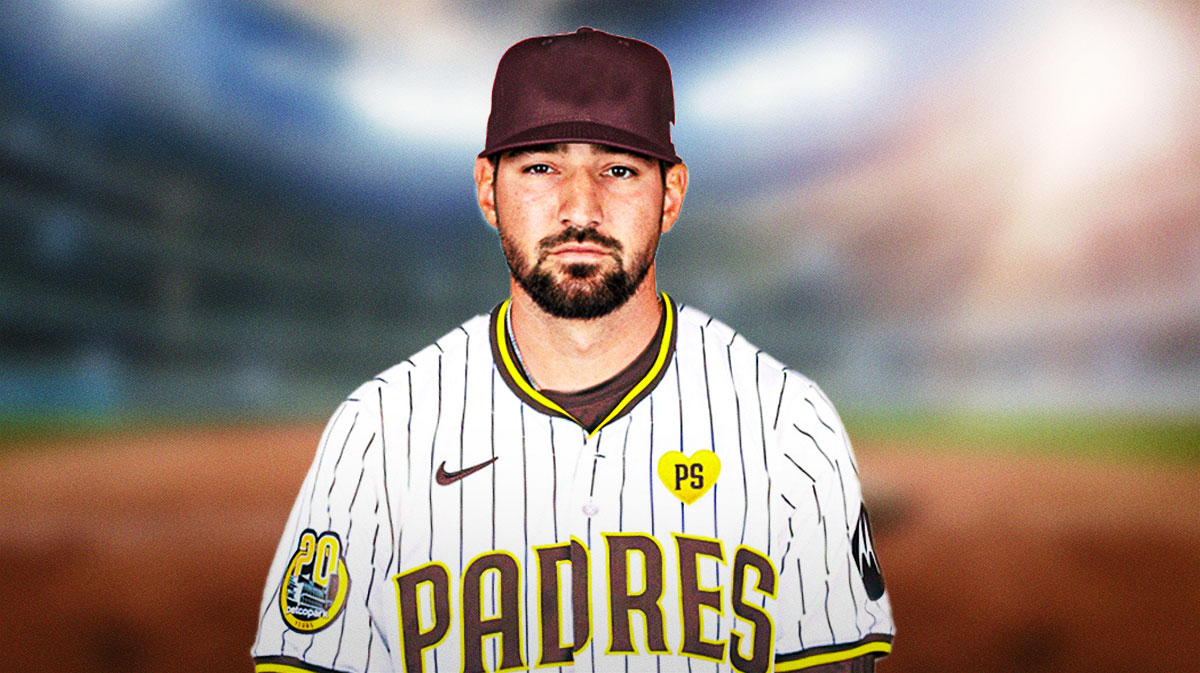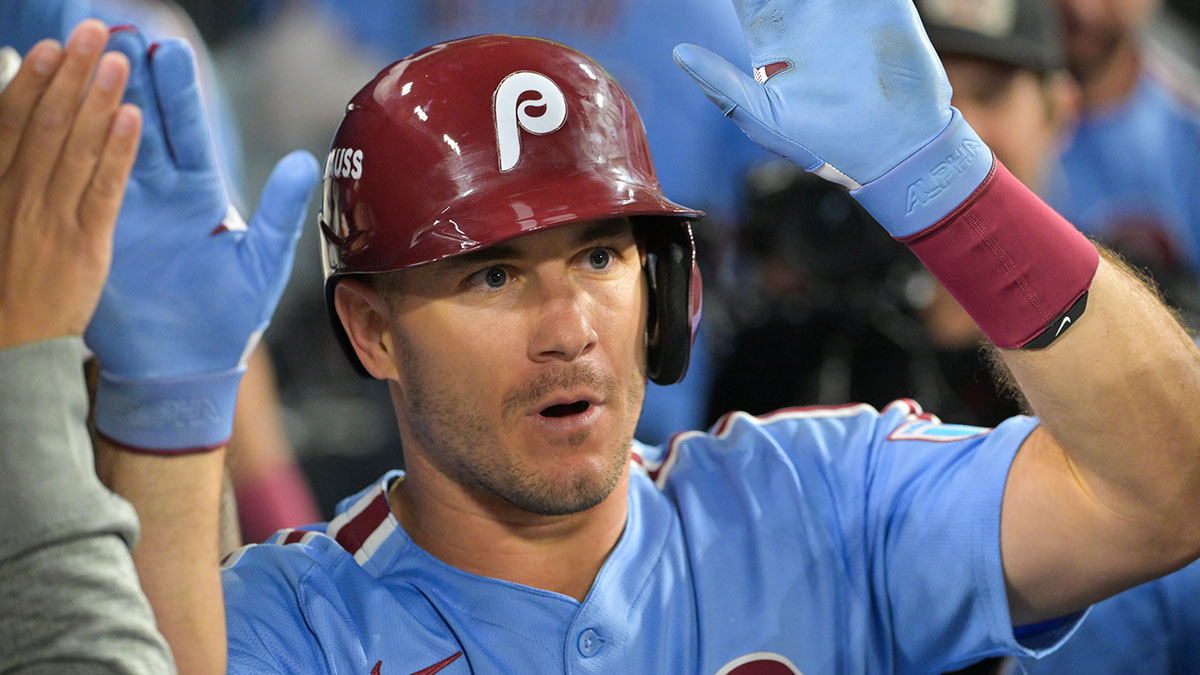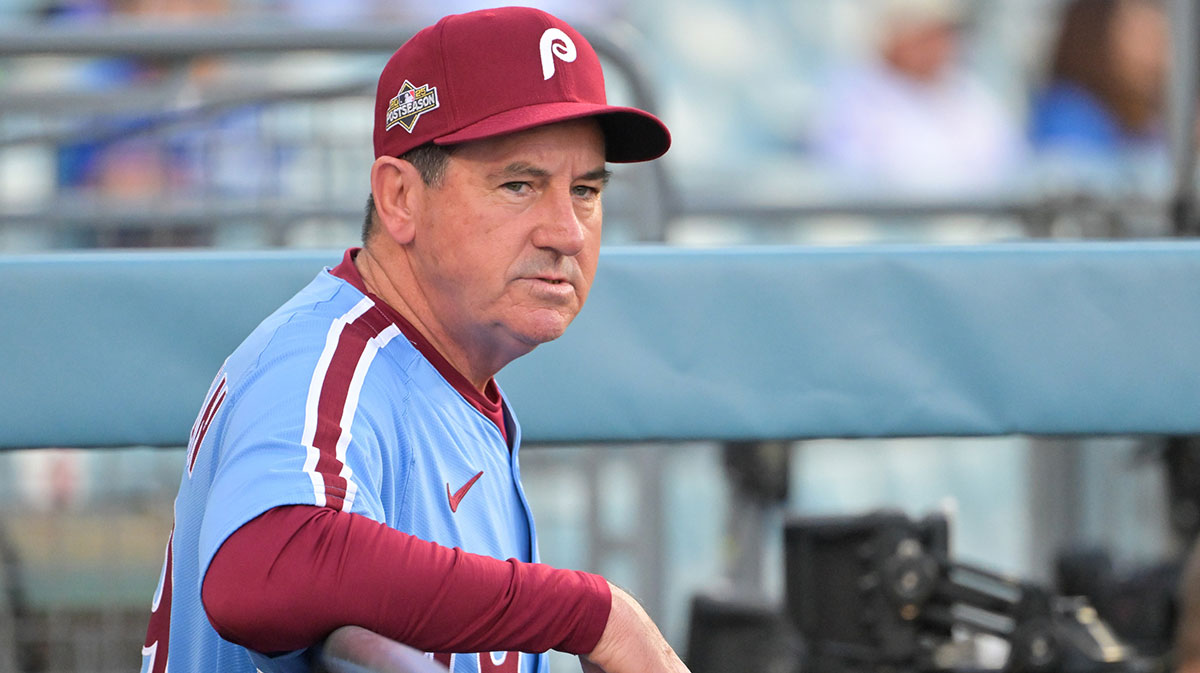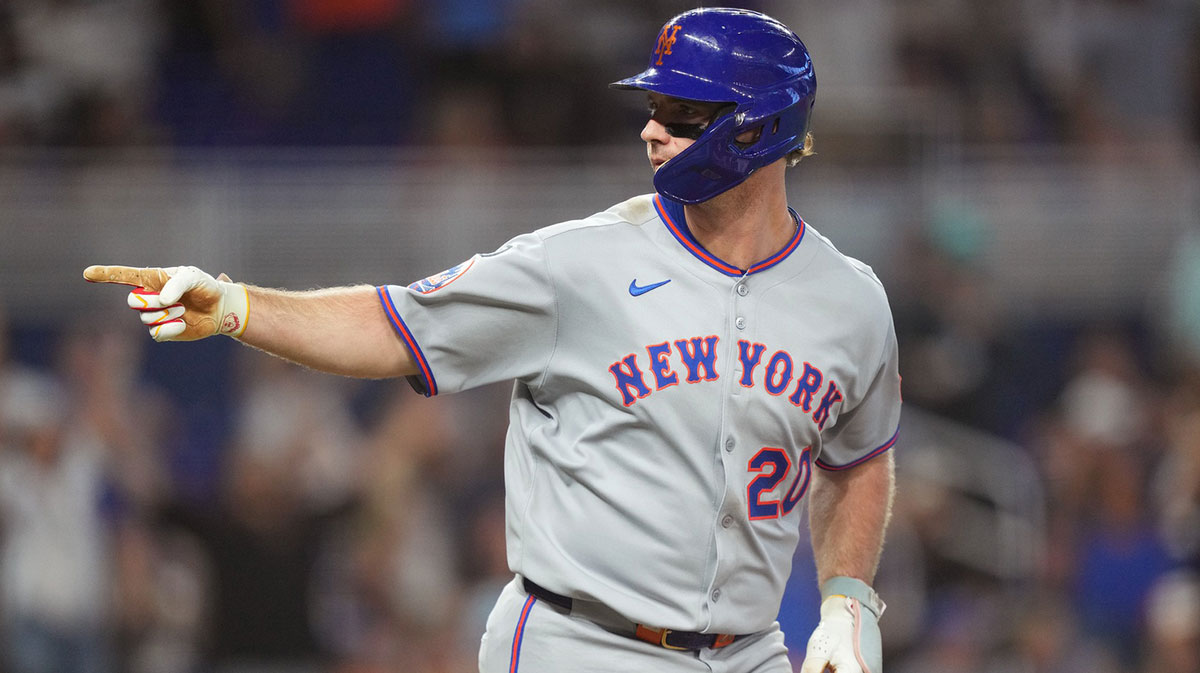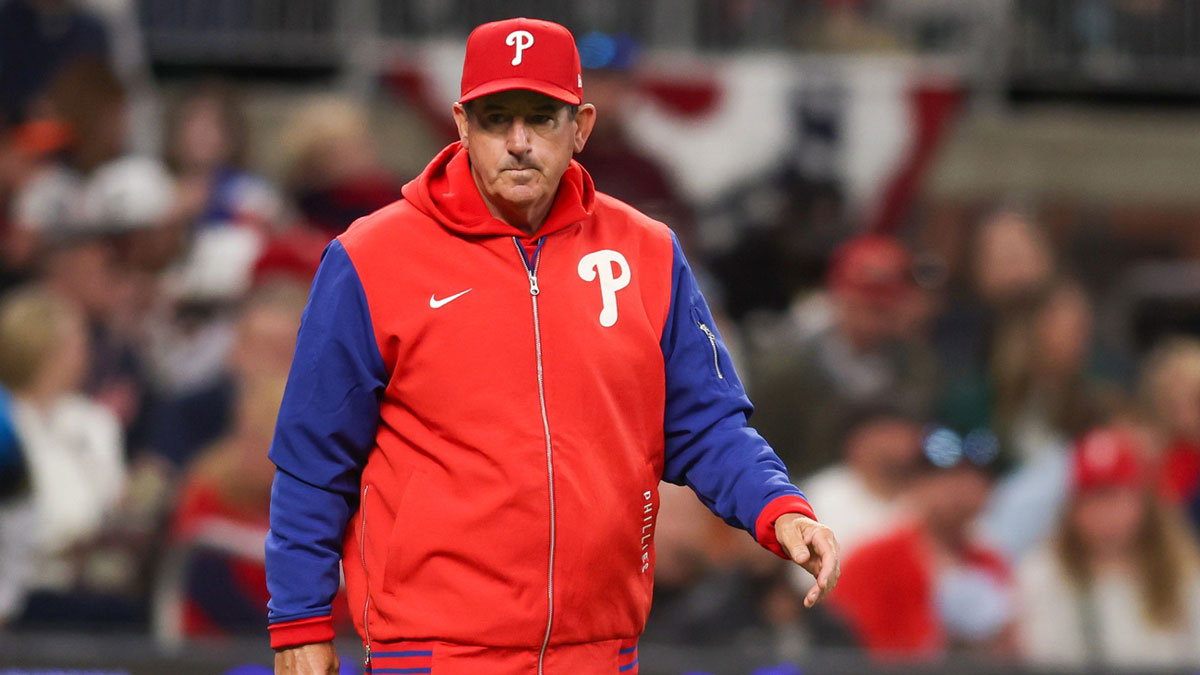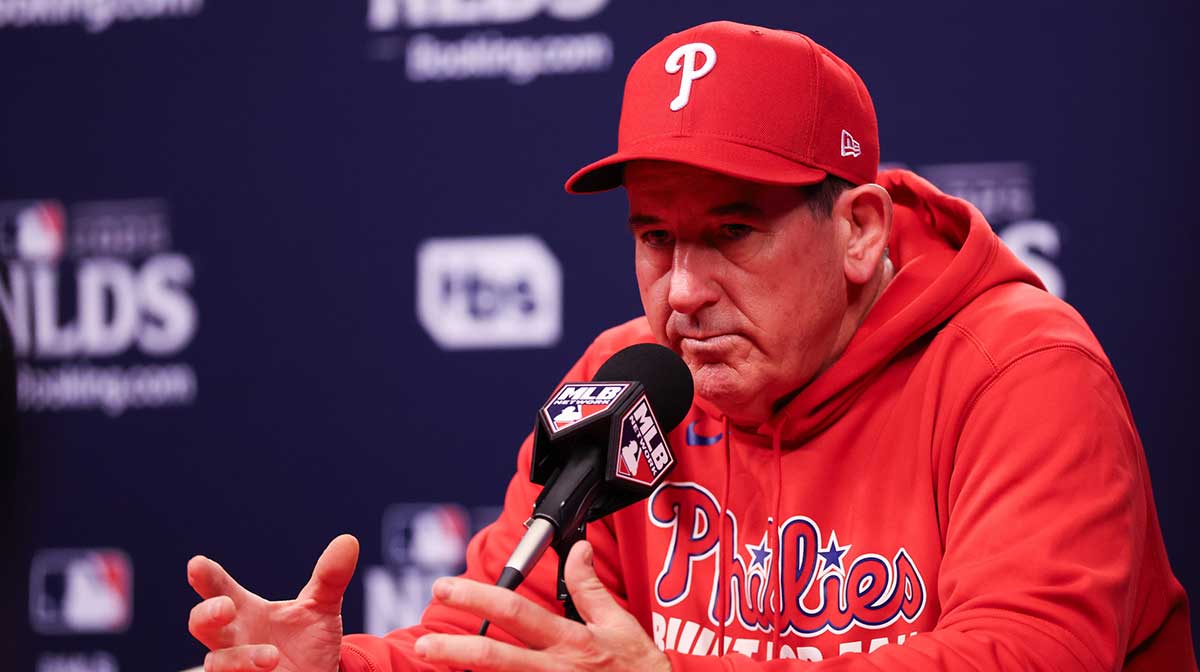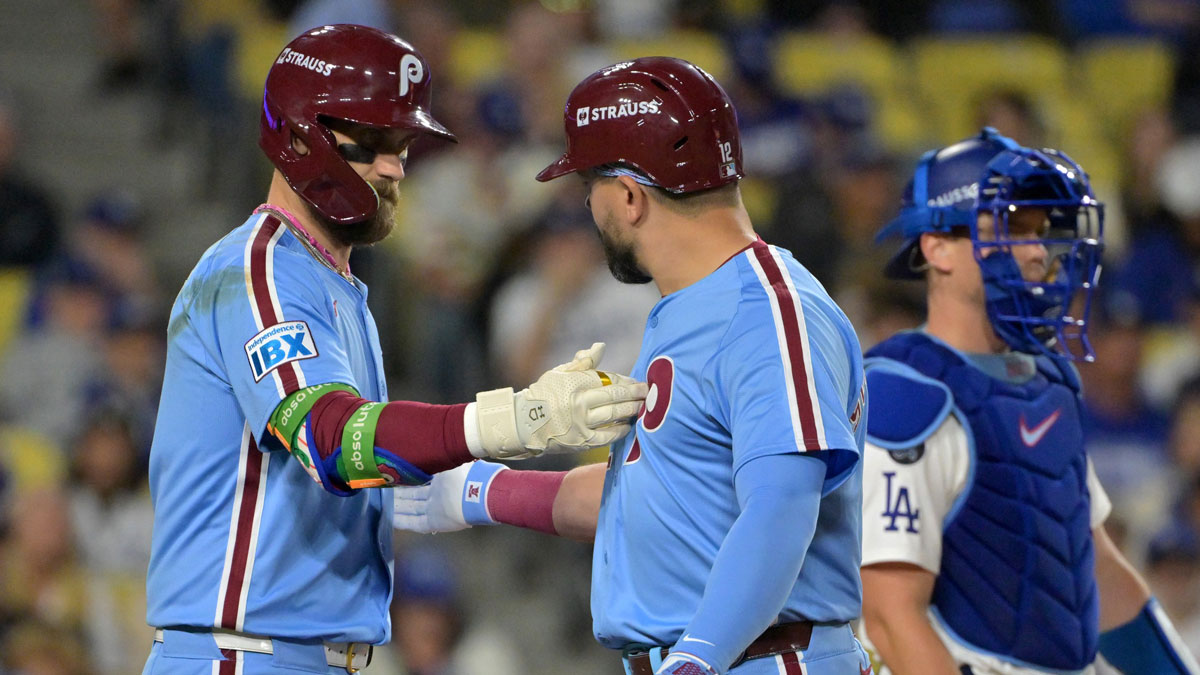Most MLB teams like having a leadoff batter with sky-high on-base percentages, the speed to swipe bags or a combination of both. The Philadelphia Phillies reject this line of thinking with Kyle Schwarber. He's not a speed threat, and he doesn’t get a ton of hits. But he makes every plate appearance count, and that’s why Philly makes him the leadoff hitter day in and day out.
Last year, Schwarber led the National League with 46 home runs while rocking a .218 batting average. This year, he's leaning even more into the three-true-outcome approach with a batting average of .190 to go along with 39 home runs so far, currently the fourth-most in all of MLB. The Phillies' order starts with a strikeout-prone slugger instead of a speedster to take advantage of balls in play. Trea Turner, who fits that mold, now hits behind Schwarber.
While Schwarber's strikeout rate and home-run rate have fallen slightly from last season, his walk rate has risen to 17.4 percent, the second-highest of his career and an improvement from last season of 4.5 percent. Juan Soto has walked 113 times in 2023, Schwarber has walked 106 times, and no one else is even at 95 yet.
Schwarber's on-base percentage of .337 is well above the league average of .320. It's a tick below the average for leadoff hitters across MLB. The Phillies have one of the deepest lineups in baseball, and Schwarber, who leads the team in RBI, home runs and walks and places third in OPS, is a huge part of it. The 30-year-old left fielder/designated hitter also stands apart with one of the most unique hitting seasons ever.
When Schwarber led off the Phillies' 7-5 loss to the Milwaukee Brewers on Saturday with a home run, he secured the MLB record for the most home runs by any player with a batting average south of the Mendoza Line, surpassing 2021 Joey Gallo. He already passed the record in home runs for a player hitting below .190, set by 2001 Mark McGwire with 29. Although he doesn’t officially qualify for that record currently, his batting average has been below .190 most of the season, including through the first day of September.
Lowest average in a season, more than 30 home runs:
Kyle Schwarber, 2023 (39 HRs, .190 AVG, 118 OPS+)
Eugenio Suárez, 2021 (31, .198, 82)
Mark Reynolds, 2010 (32, .198, 97)
Joey Gallo, 2021 (38, .199, 121)
Dave Kingman, 1982 (.37, .204, 99)
Adam Dunn, 2012 (41, .204, 114) pic.twitter.com/SFGl0v4dTn— Codify (@CodifyBaseball) September 4, 2023
The season isn’t over, of course, but Schwarber's batting average starting with a two at season's end is highly, highly unlikely. If Schwarber plays out the remainder of the Phillies' regular season — unless the team decides to rest him a little more ahead of the postseason, he very likely will play out the season, as he has missed just a single game so far in 2023 — and continues his pace of roughly 3.6 at-bats per game, he would have to hit .255 (above the MLB average by .06) over 26 games to get up to a batting average of .200. That amounts to roughly 24 hits in 94 at-bats.
Having a slow, strikeout-prone hitter leading off obviously comes with some tradeoffs. But it also comes with advantages. The Phillies give their biggest home-run threat as many chances as possible to go deep in each game. It makes it more likely for rallies started by the end of the lineup to succeed.
Looking back at the leaderboard for players with low batting averages, Kyle Schwarber also has the most single-season RBI for a hitter below .200 as his 88 beat out 2010 Mark Reynolds' 85. The record in that department for players hitting below .190 is shared by 2001 McGwire and 1991 Rob Deer with 64.
Like Gallo and McGwire, Schwarber's totals in home runs and singles are very close. At this point in his 2023 campaign, he has one more Schwarbomb than single to go along with 16 doubles and a lone triple. His approach is to simply coax pitchers into feeding him meatballs at the plate by taking balls ad nauseam.
“If I can go up there and I can work that pitcher, try to get all of his pitches out of the way and let these guys see it behind me, that’s only a positive thing, ” Kyle Schwarber said after a game last season in which he powered a Phillies win with two home runs. “I'm just trying to find ways on base. If that’s a hit, walk, homer or whatever it is, it's not going to be perfect all the time but just gotta go out there and keep putting in good at-bats.”
If there's any entity that doesn’t like Schwarber's game, it's the wins above replacement (WAR) metric, which pegs him at 0.1 on Baseball-Reference. That total is dragged way down mostly because of Schwarber's putrid defense, as he is one of the worst overall fielders in the sport. Because of injuries from the past (a UCL tear) and present (back issues) that prevent Bryce Harper from playing in the field every day, Schwarber has to stick out there in left field until the postseason. There, Harper will play at first base, and Philly will plug someone else into the outfield, leaving DH open for Schwarber.
But even then, Schwarber's oWAR (which only examines contributions on offense) is 2.0, good for just sixth on the Phillies. For someone with as much durability as him, it's somewhat shocking to see him fall outside the top five in a cumulative stat, even on a team with plenty of great hitters. The Phillies, of course, don’t care about these metrics that much. They care way more about how Schwarber benefits his teammates and creates runs, two skills he excels at.
Kyle Schwarber said in that interview from last season that he found success as a leadoff man by not thinking too much about the label of it. By harnessing his focus on attacking pitchers, he does just that. He's patient at the plate, awaiting the right pitch to drive over the fences. It results in lots of strikeouts — 175, the most in the NL and five behind Eugenio Suarez for most in MLB this year, to be exact — but also lots of wins, runs and ringing of the bell at Citizens Bank Park.

